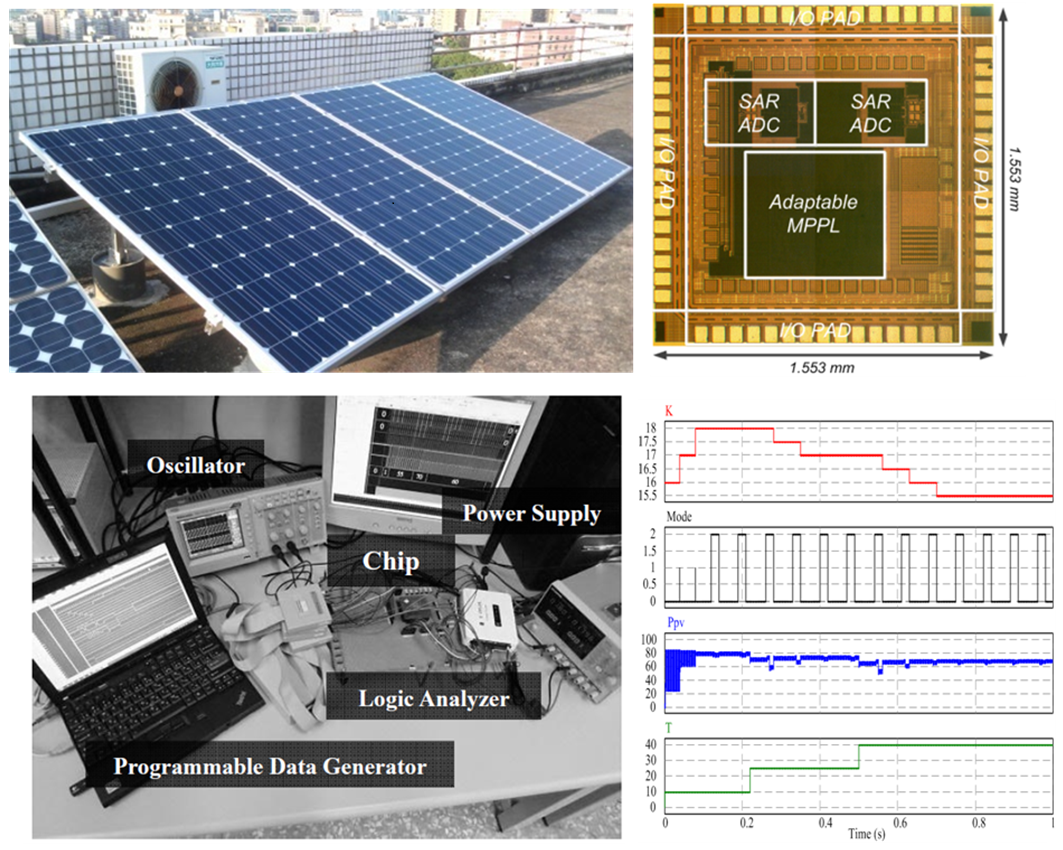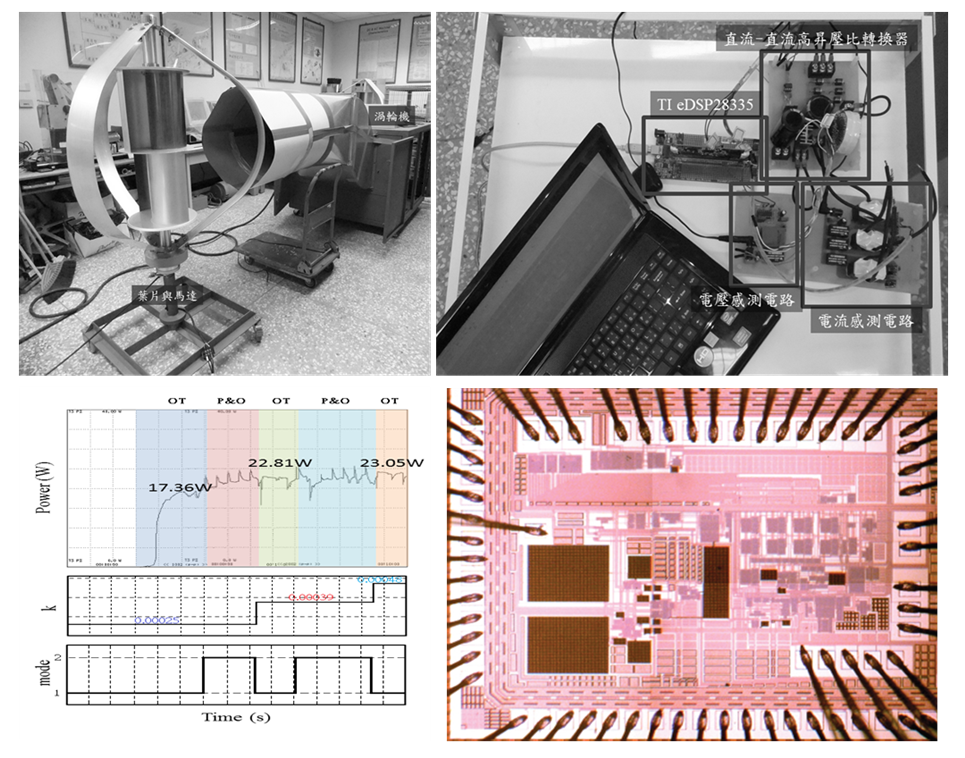Green Energy
A. VLSI microsystem for Tracking the Maximum Power Point of Photovoltaic Systems
Introduction :Photovoltaic (PV) systems are renewable sources whose operating voltage and current are nonlinearly dependent on the temperature and sunlight intensity. Therefore, maximum power point tracking (MPPT) is important for extracting as much power as possible from PV arrays. The Linear-line Approximation Method (LLAM) is able to converge to the MPPT point quickly regardless of the changes of sunlight intensity. However, the slope of the linear line method becomes non-optimal as the temperature changes, causing the PV systems to leave its MPPT operation. This research proposes a modified LLAM whose line slope can adapt automatically in response to temperature changes, maintaining an optimal MPPT control. After verifying the feasibility and capability of the proposed algorithm by simulation, the proposed MPPT method is further implemented as a microsystem in VLSI (Very Large Scale Integration). The application-specific VLSI is expected to achieve higher control efficiency and lower power consumption.

Fig. 1 : (a) The PV array (b) The photo of the MPPT IC with adaptability to compensate for temperature changes (c)The experimental setup for chip testing (d)The slope of LLAM (red curve) adapted automatically to maintain maximum-power conversion (Ppv).
B. VLSI microsystem for Tracking the Maximum Power Point of Wind-Power Generator
Introduction :The vertical, small-scale wind power generator has been an attractive clean energy. This research aims to identify MPPT algorithms suitable for wind-power generation and to implement the algorithms as a microsystem on a chip. The optimal-torque (OT) control method is able to track MPPT much faster than other algorithms when the wind speed varies continuously. However, the OT control could track the wrong maximum power point as the environment changes. Therefore, this research investigates the feasibility of improving the optimal-torque-control method and realizing the algorithms as a single-chip system.“An optimal torque control method with self-adaptability to environmental changes ” is developed and verified by both simulation and implementation in a microprocessor. Taking into account the fact that the wind speed changes dynamically and continuously, this thesis further adopts the “dynamic optimal torque control (DOTC) method” to track maximum power point fast and reliably as wind speed changes. After verifying the capability of the DOTC method in simulation, this DOTC algorithm is further realized as a microsystem with analog integrated circuits.

Fig.2 (a)The wind-power generator (b) The experimental setup for verifying MPPT algorithm (c) The measured adaptable factor k for optimal-torque (OT) control (d) The photo of the VLSI chip implementing the dynamic OT control algorithm for tracking the MPPT of wind-power generator
Characteristics :The algorithm suitable for tacking the maximum power point will be first identified from behaviour simulation in Matlab and PSIM (with the model of power converters). The algorithm will be encoded in microcontroller or FPGA and integrated with power converters to verify its functionality in real hardware environment. The algorithm will then translated into customised VLSI integrated circuits for IC fabrication and testing.
Pre-requisites:Knowledge in electronics, Experience in VLSI design
Professional skills obtained:Knowledge in power electronics and algorithms for maximum-power control, Experience in PSIM simulation of power converters and prototyping with microcontroller, Experience in mixed-mode VLSI design.






